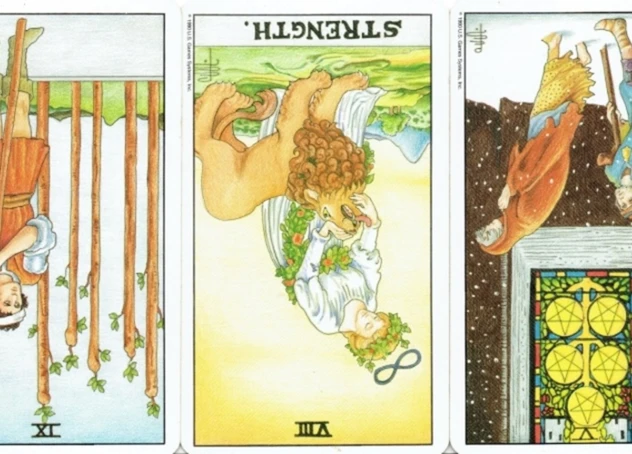Tarot card readings have been used for centuries as a powerful divination tool, providing guidance and insight into various aspects of life. However, interpreting tarot cards can be a complex task, especially when it comes to differentiating between upright and reversed card meanings. Understanding the nuances between these two interpretations is crucial in unlocking the true message of each card. In this article, we will explore the significance of upright and reversed tarot card meanings, how to identify them, and provide tips on how to read and interpret them effectively. Whether you’re a seasoned tarot reader or just starting out on your spiritual journey, this guide will help you navigate the mystical world of tarot cards with clarity and confidence.
Contents
- Understanding Tarot Card Meanings
- Differentiating Between Upright and Reversed Cards
- Interpreting Upright Card Meanings
- Unlocking Reversed Card Meanings
- Tips for Reading Upright and Reversed Cards
- Conclusion
-
Frequently Asked Questions
- What is the significance of tarot card meanings?
- Do the meanings of tarot cards differ based on their position in a spread?
- What does an upright tarot card signify?
- What does a reversed tarot card indicate?
- How can I identify if a tarot card is upright or reversed?
- What are some general interpretations for upright tarot cards?
- Can reversed tarot cards have positive meanings?
- Should I trust my intuition when interpreting tarot card meanings?
- How can card combinations enhance my tarot card readings?
- Why is paying attention to surrounding cards important in tarot readings?
- References
Understanding Tarot Card Meanings
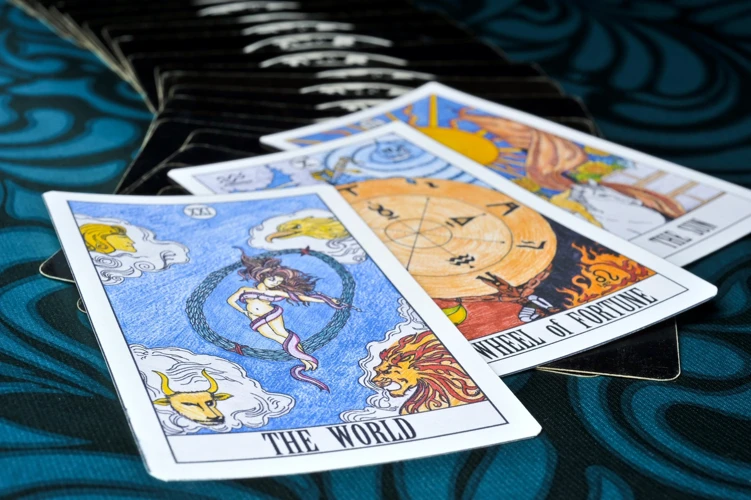
Understanding tarot card meanings is essential in becoming a skilled tarot reader. Tarot cards are symbolic representations of different aspects of life, including emotions, challenges, and opportunities. Each card holds its own unique energy and message, which can be interpreted through a combination of intuition and knowledge. Knowing the meanings of each card allows the reader to uncover insights and wisdom from the divine realm. When interpreting tarot cards, it is crucial to consider both the individual card meanings and the positions in which they appear within a spread. This helps to provide a more holistic understanding of the message being conveyed. Whether you are reading for yourself or others, taking the time to delve deep into the interpretations of tarot cards will enhance your ability to provide accurate and meaningful readings. For more information on interpreting reversed tarot cards, you can check out our article Creative Techniques for Reversed Tarot Cards.
What are Tarot Card Meanings?
Tarot card meanings refer to the symbolic representations and interpretations assigned to each card in a tarot deck. These meanings are derived from a combination of traditional symbolism, archetypal associations, and the reader’s intuition. Each tarot card carries its own unique energy and message, serving as a tool for divination and insight. The meanings of tarot cards can vary slightly between different tarot decks and traditions, but there are common themes and symbols that remain consistent.
To understand tarot card meanings, it is helpful to categorize them into different groups or suits. The four suits in a standard tarot deck are Cups, Swords, Pentacles, and Wands. Each suit represents a different aspect of life, such as emotions, intellect, material abundance, and passion. Within each suit, there are numbered cards from Ace to Ten, as well as Court cards (Page, Knight, Queen, and King).
In addition to the suits, there are also the Major Arcana cards, which are a separate group of 22 cards that hold significant spiritual and transformative meanings. These cards represent major life events, archetypal energies, and spiritual lessons.
Tarot card meanings can be interpreted both individually and in relation to each other within a reading. The position of the card in the spread, the question asked, and the surrounding cards all contribute to the overall interpretation. It is important to remember that tarot card meanings are not fixed or absolute, but rather open to the intuitive interpretation of the reader.
For an in-depth understanding of how to interpret reversed tarot cards, you can refer to our article on Developing Intuition with Reversed Tarot Cards.
The Importance of Interpreting Card Positions
Interpreting the positions of tarot cards within a spread is of utmost importance in obtaining a comprehensive understanding of a reading. Each card position holds significance and adds layers of meaning to the overall message conveyed by the cards. The positions serve as guideposts, directing the reader to focus on specific areas of life or aspects of a situation. The placement of a card can modify its interpretation, shifting the energy and emphasizing certain aspects. For instance, a card in the past position may indicate influences from the past that are affecting the present situation, while a card in the future position may suggest potential outcomes or developments. By considering the positions, readers can provide more accurate and detailed insights, allowing for a deeper exploration of the querent’s inquiries. To learn more about various tarot card spreads and how reversed cards can affect the positions, you can refer to our article on Tarot Reversed Spreads.
Differentiating Between Upright and Reversed Cards
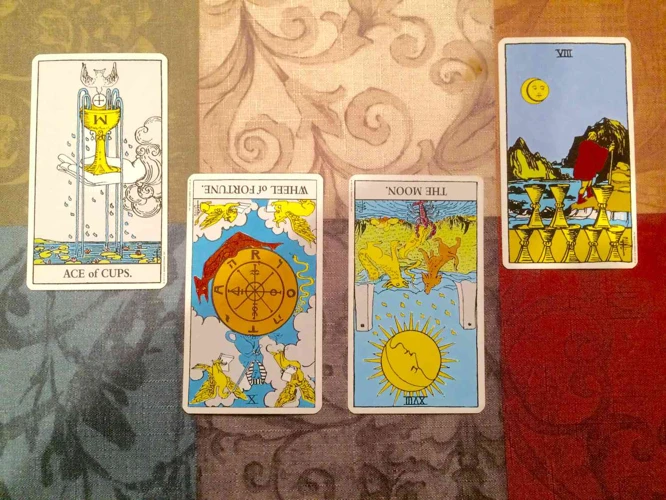
Differentiating between upright and reversed tarot cards is a fundamental skill for any tarot reader. Each card holds its own distinct meaning, and the orientation in which it appears can significantly impact its interpretation. When a card is drawn upright, its energy and message are clear and direct, representing its traditional meaning. In contrast, when a card is drawn reversed, its energy is inverted or blocked, indicating a potential challenge or a need for deeper introspection. To identify whether a card is upright or reversed, one can look at the position of the card within the spread, paying attention to any visual cues or symbolism depicted on the card itself. Developing a keen eye for differentiating between upright and reversed cards is a crucial step in mastering the art of tarot reading. By understanding and interpreting the subtle variations in card orientations, one can uncover deeper layers of insight and guidance from the tarot deck.
What Does an Upright Tarot Card Mean?
What Does an Upright Tarot Card Mean?
An upright tarot card refers to a card that is drawn and placed in its natural position during a tarot reading. When a card is upright, it represents the traditional meaning associated with that particular card. It signifies the positive or neutral aspects of the card’s symbolism, bringing forth its inherent energy and message. Upright tarot cards often indicate clarity, forward movement, and a sense of alignment with one’s higher purpose. They can represent opportunities, favorable outcomes, and the manifestation of desires. Each upright card carries its own unique significance and interpretation, reflecting various aspects of life, such as love, career, spirituality, or personal growth.
Interpreting an upright tarot card requires careful consideration of its symbolism, imagery, and keywords associated with it. It’s important to study and understand the traditional meanings of each card, as well as the context in which it appears within a tarot spread. By analyzing the upright position of a tarot card, a reader can gain valuable insights and guidance to navigate through life’s challenges and make informed decisions.
It’s worth noting that while upright tarot cards generally convey positive or neutral meanings, it’s essential to put them in context and consider other cards in the spread to gain a comprehensive understanding of the reading. The surrounding cards, their positions, and the overall energy of the reading can influence the interpretation of an upright tarot card.
In the next section, we will explore specific examples of upright tarot card meanings and how they can be applied in different areas of life.
What Does a Reversed Tarot Card Mean?
When a tarot card appears in a reversed position, it holds a different interpretation and energy compared to its upright counterpart. A reversed tarot card represents a challenge or blockage in the energy of the card. It suggests that the qualities, themes, or lessons associated with the card may be present, but they might not be fully expressed or may be distorted. Reversed cards can indicate a need for introspection, caution, or a shift in perspective. They often signal delays, obstacles, or imbalance in the situation at hand. It is important to note that reversed cards are not inherently negative or positive, but rather a reflection of the current circumstances. They offer an opportunity for growth, learning, and self-reflection. Interpreting reversed tarot cards requires careful consideration of the surrounding cards, the question asked, and the reader’s intuition. By exploring the reversed meanings of tarot cards, readers can gain deeper insights into the nuances and complexities of a situation, guiding them towards a more comprehensive understanding of the reading.
How to Identify Upright and Reversed Cards
When performing a tarot card reading, being able to identify whether a card is upright or reversed is crucial in accurately interpreting its meaning. Here are some key ways to identify upright and reversed cards. Firstly, pay attention to the position of the card within the spread. Upright cards are typically placed right side up, while reversed cards are positioned upside down. Take note of any reversed cards and their positions, as they carry a different energy and message compared to their upright counterparts. Secondly, observe the imagery and symbols on the card. Upright cards often have clear, unobstructed imagery that can easily be interpreted, while reversed cards may feature distorted or inverted images. Pay attention to any visual cues that indicate the card’s orientation. Additionally, consider the energy and intuitive sense you get from the card. Upright cards usually evoke a positive and straightforward energy, while reversed cards may feel more challenging or blocked. Trust your intuition and the energy you pick up from the card to determine its orientation. By combining these methods – observing the card’s position, interpreting its imagery, and trusting your intuition – you can effectively identify whether a tarot card is upright or reversed, allowing for a more accurate and insightful interpretation.
Interpreting Upright Card Meanings
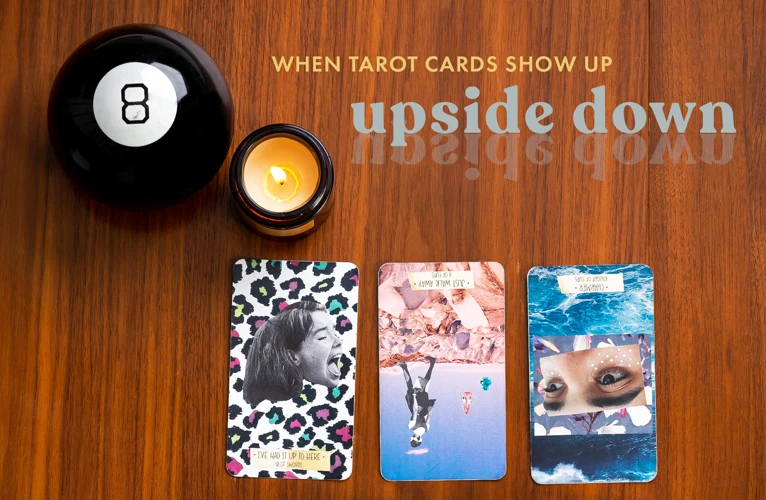
Interpreting upright card meanings is a fundamental aspect of tarot reading. When a card appears in its upright position, it signifies its traditional and intended interpretation. It represents the positive aspects, opportunities, and energies associated with the card. To interpret upright card meanings accurately, it is important to consider the symbolism, imagery, and traditional interpretations of each card. Some common interpretations of upright cards include success, harmony, abundance, and growth. By delving deeper into the specific meanings of each card, tarot readers can provide insightful and empowering guidance to their clients. Whether you are using a table or a list format, organizing the upright card meanings can be helpful for reference during readings, allowing you to easily access the interpretations and insights associated with each card.
General Upright Card Interpretations
General upright card interpretations are key to understanding the positive aspects and messages conveyed by each tarot card. When a tarot card appears in its upright position, it signifies the card’s inherent qualities and energies. Upright cards often represent the desired outcome or favorable circumstances in a reading. These interpretations provide insights into areas such as love, career, finances, and personal growth. Each card has its own distinct meaning, but some common general upright interpretations can be found across different decks and systems. For example, the Fool card is often associated with new beginnings, taking risks, and embracing spontaneity. The Empress card represents nurturing, abundance, and creativity. The Strength card signifies inner strength, courage, and overcoming challenges. These interpretations serve as a foundation upon which readers can build their own intuitive insights and personalized meanings based on the specific cards and their interactions within a reading. It is important to note that tarot readings are subjective, and personal interpretation plays a significant role in uncovering the deeper meaning of each card in a reading. By familiarizing oneself with general upright card interpretations, readers can enhance their ability to deliver accurate and meaningful readings.
Examples of Upright Card Meanings
Examples of Upright Card Meanings:
1. The Fool: In its upright position, The Fool represents new beginnings, spontaneity, and leaps of faith. It signifies taking risks and embracing opportunities without fear. This card encourages you to trust your instincts and follow your heart wherever it may lead you.
2. The Empress: When upright, The Empress symbolizes abundance, nurturing, and creativity. It signifies the manifestation of ideas and the potential for growth and fertility. This card often represents a time of abundance and harmony in relationships and encourages you to embrace your own inner power and creativity.
3. The Justice: In its upright position, The Justice card represents fairness, balance, and justice being served. It signifies making decisions based on reason and fairness rather than emotions. This card often indicates that a situation will be resolved in a fair and just manner and encourages you to seek truth and balance in your own life.
4. The Sun: When upright, The Sun card symbolizes happiness, success, and vitality. It represents a period of joy and positivity, where you feel confident and aligned with your true self. This card often signifies new beginnings and a release of any past burdens, bringing about a sense of clarity and renewal.
5. The World: In its upright position, The World card represents completion, wholeness, and fulfillment. It signifies the successful completion of a cycle or project and indicates a time of abundance and harmony. This card reminds you that you have reached a significant milestone and encourages you to embrace the opportunities that await you.
These are just a few examples of upright card meanings, and each card holds its own unique message and significance. Remember, the interpretation of tarot cards is a deeply personal and intuitive process, and these examples serve as guidance to help you develop your own understanding and connection with the cards.
Unlocking Reversed Card Meanings
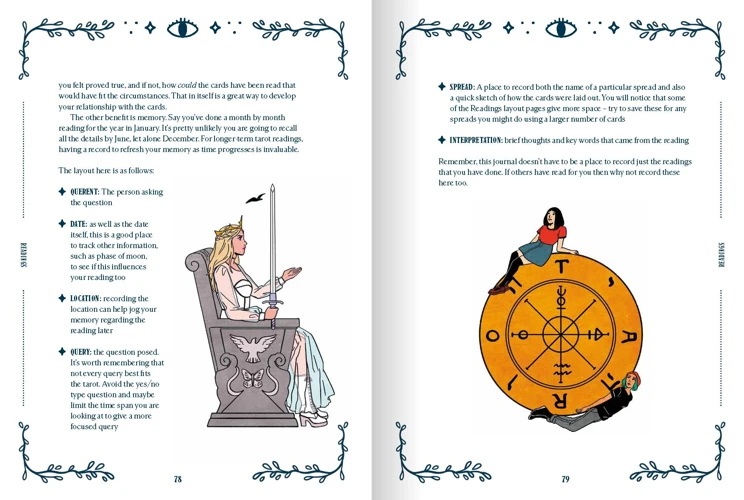
Unlocking the meanings of reversed tarot cards is a fascinating aspect of tarot reading that adds depth and nuance to the interpretation. When a card appears in a reversed position, its energy and message may be subtly altered or intensified. Reversed cards often indicate a different aspect of the card’s symbolism, presenting challenges, blockages, or hidden aspects that need to be acknowledged and addressed. Interpreting reversed cards requires a keen sense of intuition and an open mind to explore the shadows and hidden depths within each card. It is important to consider the surrounding cards, the querent’s question, and any intuitive insights that may arise during the reading. By embracing the reversed cards and delving into their unique meanings, tarot readers unlock a wealth of additional wisdom and guidance for their clients. To enhance your understanding of reversed tarot card meanings, you can explore our article on Developing Intuition with Reversed Tarot Cards.
General Reversed Card Interpretations
When it comes to interpreting reversed tarot cards, there are some general interpretations to keep in mind. Reversed cards often suggest a blockage or a challenge in the energy represented by the upright meaning of the card. They indicate that the energy is being suppressed or not fully expressed. Reversals can also signify a need for inner reflection and introspection. They may indicate that the energy of the card is being exaggerated or taken to an extreme. Additionally, reversed cards can represent a delay or a slowing down of the energy associated with the upright meaning. They can also suggest a need for caution or a warning to proceed with care. However, it’s essential to remember that the interpretation of reversed cards can vary depending on the specific question or context of the reading. It’s important to trust your intuition and let the cards guide you in uncovering the deeper layers of meaning. If you’re interested in developing your intuition further when it comes to interpreting reversed tarot cards, you can explore our article on Developing Your Intuition with Reversed Tarot Cards.
Examples of Reversed Card Meanings
When it comes to interpreting reversed card meanings in tarot readings, there are numerous possibilities and scenarios to consider. The reversed position of a tarot card often suggests a different interpretation or a shift in energy compared to its upright counterpart. Let’s explore some examples of reversed card meanings:
1. The Fool (Reversed): In its upright position, The Fool represents new beginnings and taking a leap of faith. However, when reversed, it can indicate recklessness or a lack of foresight. It serves as a reminder to exercise caution and consider the potential consequences before embarking on any new ventures.
2. The Lovers (Reversed): In its upright position, The Lovers symbolize strong partnerships and harmonious relationships. When reversed, it can indicate conflicts, a lack of connection, or difficult choices in relationships. It suggests the need for open communication, compromise, and introspection to resolve existing issues.
3. The Tower (Reversed): The Tower card, when upright, signifies sudden and necessary change that ultimately leads to growth and transformation. However, when reversed, it may represent resistance to change or an unwillingness to let go of old patterns. It serves as a reminder to embrace transformation and release any attachments that hinder personal growth.
4. The Hanged Man (Reversed): The Hanged Man, in its upright position, symbolizes surrender and perspective. When reversed, it can signify delays, resistance to letting go, or a reluctance to gain a new perspective. It reminds us to release control, surrender to the natural flow of life, and seek alternative viewpoints for personal growth.
5. The Death (Reversed): While The Death card often represents transformation and new beginnings in its upright position, when reversed, it can indicate resistance to change or stagnation. It suggests the need to let go of old patterns, beliefs, or relationships to make room for personal growth and new opportunities.
Remember, these examples serve as general interpretations, and the meaning of reversed cards can vary depending on the context of the reading and the surrounding cards. Trust your intuition and consider the overall energy and message conveyed by the entire spread to gain a comprehensive understanding of the reversed card meanings.
Tips for Reading Upright and Reversed Cards
When it comes to reading upright and reversed tarot cards, there are a few key tips that can greatly enhance your interpretation skills. Firstly, always trust your intuition and listen to the intuitive messages that arise within you as you connect with the cards. Your gut feeling can provide valuable insights. Secondly, consider the combinations of cards in a spread as they can provide additional layers of meaning and context. The cards work together to tell a story. Lastly, pay close attention to the cards surrounding the upright or reversed card in question. These neighboring cards can offer further clues and clarification to the overall meaning. By following these tips, you can deepen your understanding and provide more accurate readings. If you’re interested in developing your intuition further, check out our article on Developing Intuition with Reversed Tarot Cards.
Trust your Intuition
Trust your intuition is a fundamental aspect of reading tarot cards, especially when it comes to interpreting upright and reversed card meanings. Intuition is your inner knowing, your gut feeling that guides you towards the right interpretation. When facing a card, take a moment to tune in to your intuition and allow your instincts to speak to you. Notice any immediate impressions, emotions, or thoughts that arise as you observe the card. Trusting your intuition means having confidence in your own inner wisdom and trusting that the messages you receive are valid and relevant. Remember, tarot is a tool that works hand in hand with your intuition, so don’t be afraid to trust the guidance that comes from within. Although it’s essential to study and learn the traditional meanings of each card, it’s equally important to cultivate your intuitive abilities. This can be achieved through regular practice, meditation, and connecting with your inner self. Trusting your intuition will bring a unique and personalized perspective to your tarot readings, allowing you to provide insightful interpretations that resonate deeply with the querent.
Consider Card Combinations
Consider Card Combinations:
When reading tarot cards, it is important to analyze not only the individual meanings of each card but also their combinations within a spread. The interaction between cards can greatly impact their overall interpretation and provide deeper insights into the situation at hand. Here are a few key points to consider when analyzing card combinations:
1. Card Pairings: Pay attention to the cards that appear next to each other. Their proximity suggests a strong connection or influence between the energies they represent. For example, if the Empress (representing abundance and nurturing) appears next to the Ace of Cups (representing new beginnings in emotions), it suggests that a new emotional phase will bring abundance and growth.
2. Elemental Associations: Each tarot suit corresponds to one of the four elements – Cups (water), Wands (fire), Swords (air), and Pentacles (earth). Consider how the elemental associations of the cards interact with each other. The combination of Fire and Water, for instance, can indicate a creative spark igniting deep emotions or passions.
3. Numerological Significance: Pay attention to the numeric values of the cards. The numbers can provide additional meanings and insights. For example, if you draw the Three of Swords (representing heartbreak) alongside the Six of Cups (representing nostalgia and childhood memories), it could suggest healing and release from past emotional wounds.
4. Major Arcana Influence: When a Major Arcana card appears alongside the Minor Arcana cards, it amplifies the significance and theme of the reading. The Major Arcana cards represent major life lessons and spiritual growth. Their presence in a card combination indicates a profound impact on the situation being explored.
By considering these card combinations and their interactions, you can uncover deeper layers of meaning within a tarot reading. Remember, there are endless possibilities, and your intuition plays a crucial role in interpreting card combinations. Trust your instincts and allow the cards to guide you in unveiling the messages they hold.
Pay Attention to Surrounding Cards
When interpreting tarot cards, paying attention to the surrounding cards is crucial in gaining a deeper understanding of the overall message being conveyed. Each card within a tarot spread has its own unique energy and symbolism, and when cards are placed next to each other, they influence and interact with one another. By observing the relationships and connections between the cards, you can uncover additional layers of meaning and insight.
One technique to pay attention to the surrounding cards is to look for patterns or themes that emerge. Are there multiple cards from the same suit? Do you notice a particular color or symbol that appears frequently? These patterns can provide valuable clues about the central theme or focus of the reading.
Another aspect to consider is the position of the surrounding cards in relation to the card in question. Are the surrounding cards before or after the central card? Are they above or below? The position can give you insights into the influence and timing of the energy being portrayed.
Additionally, take note of any contrasting or complementary energies present in the surrounding cards. Are there opposing elements or conflicting messages? Or do the neighboring cards support and reinforce the meaning of the central card? Understanding these dynamics will help you create a more nuanced interpretation.
To better visualize and analyze the relationships between cards, you can create a simple table or list. List the surrounding cards and their positions in relation to the central card. Write down any observations or impressions that come to mind as you analyze the connections between the cards. This method can help you organize your thoughts and uncover insightful connections that may have otherwise been overlooked.
Remember that tarot reading is a blend of intuition and knowledge, and paying attention to the surrounding cards allows you to tap into your intuitive abilities while grounding your interpretations in the symbolism of the cards. By observing the relationships, patterns, and dynamics among the cards, you will gain a more comprehensive understanding of the overall message and uncover deeper insights in your tarot readings.
Conclusion
In conclusion, differentiating between upright and reversed tarot card meanings is a crucial aspect of tarot reading. Understanding the nuances between these two interpretations allows for a deeper connection with the cards and a more accurate interpretation of their messages. The upright cards represent the positive aspects and energies related to the card’s symbolism, while the reversed cards indicate challenges, obstacles, or a need for introspection and inner growth. By learning to identify upright and reversed cards and interpreting their meanings, you can unlock profound insights and guidance from the tarot. Trusting your intuition, considering card combinations, and paying attention to the surrounding cards are essential tips for reading upright and reversed cards successfully. With practice and dedication, you will develop a stronger bond with the tarot and be able to provide meaningful and enlightening readings. Remember, tarot is a tool for self-discovery and spiritual growth, and the interpretations of the cards are subjective. So, embrace your unique interpretation style and let the tarot cards guide you on your journey of exploration and transformation.
Frequently Asked Questions
What is the significance of tarot card meanings?
The significance of tarot card meanings lies in their ability to provide guidance, insights, and revelations into various areas of life. They serve as a tool for self-reflection, spiritual growth, and decision-making.
Do the meanings of tarot cards differ based on their position in a spread?
Yes, the position of a tarot card in a spread can alter its interpretation. The placement of the card can reveal additional insights or add depth to its meaning, providing a more nuanced understanding of the situation.
What does an upright tarot card signify?
An upright tarot card generally represents the positive or direct energy of its meaning. It signifies the core essence of the card and is typically associated with favorable outcomes or aspects of life.
What does a reversed tarot card indicate?
A reversed tarot card indicates a disruption or blockage in the energy of the card. It suggests that the typical meaning of the card is inverted or weakened, often pointing to challenges or areas that require attention and resolution.
How can I identify if a tarot card is upright or reversed?
To identify if a tarot card is upright or reversed, look for symbols on the card that have changed direction. Some decks also feature reversible images, where the card can be read both upright and reversed. Additionally, paying attention to your intuition can help determine the orientation of the card.
What are some general interpretations for upright tarot cards?
Upright tarot cards generally represent positive aspects of their meaning, such as opportunities, growth, and harmony. They often signify favorable circumstances, personal strengths, and helpful guidance.
Can reversed tarot cards have positive meanings?
Yes, reversed tarot cards can still have positive meanings, although they may require some additional effort or resolution to fully manifest their positive potential. Reversed cards can offer opportunities for growth, introspection, and transformation.
Should I trust my intuition when interpreting tarot card meanings?
Yes, trusting your intuition is crucial when interpreting tarot card meanings. Your intuitive insights can complement your knowledge of the card meanings and provide deeper and more personalized interpretations for yourself or the querent.
How can card combinations enhance my tarot card readings?
Card combinations, where multiple cards are drawn and interpreted together, provide a more comprehensive understanding of a situation. They shed light on the relationships and connections between different aspects of life, offering a more nuanced and detailed interpretation.
Why is paying attention to surrounding cards important in tarot readings?
Paying attention to the surrounding cards in a tarot reading helps to create a cohesive narrative and context. The neighboring cards can influence the interpretation of a card and provide additional insights and perspectives to consider.
